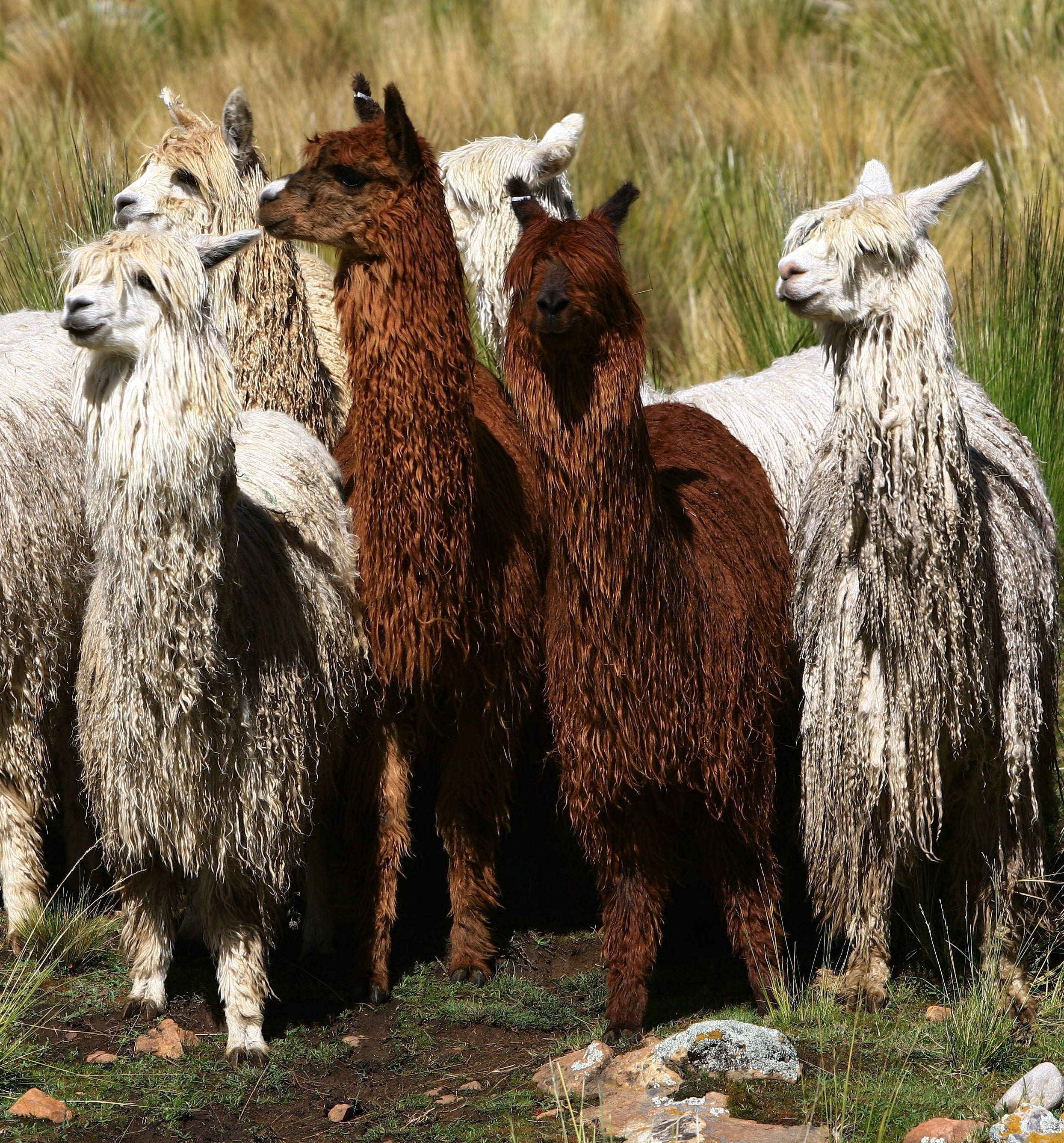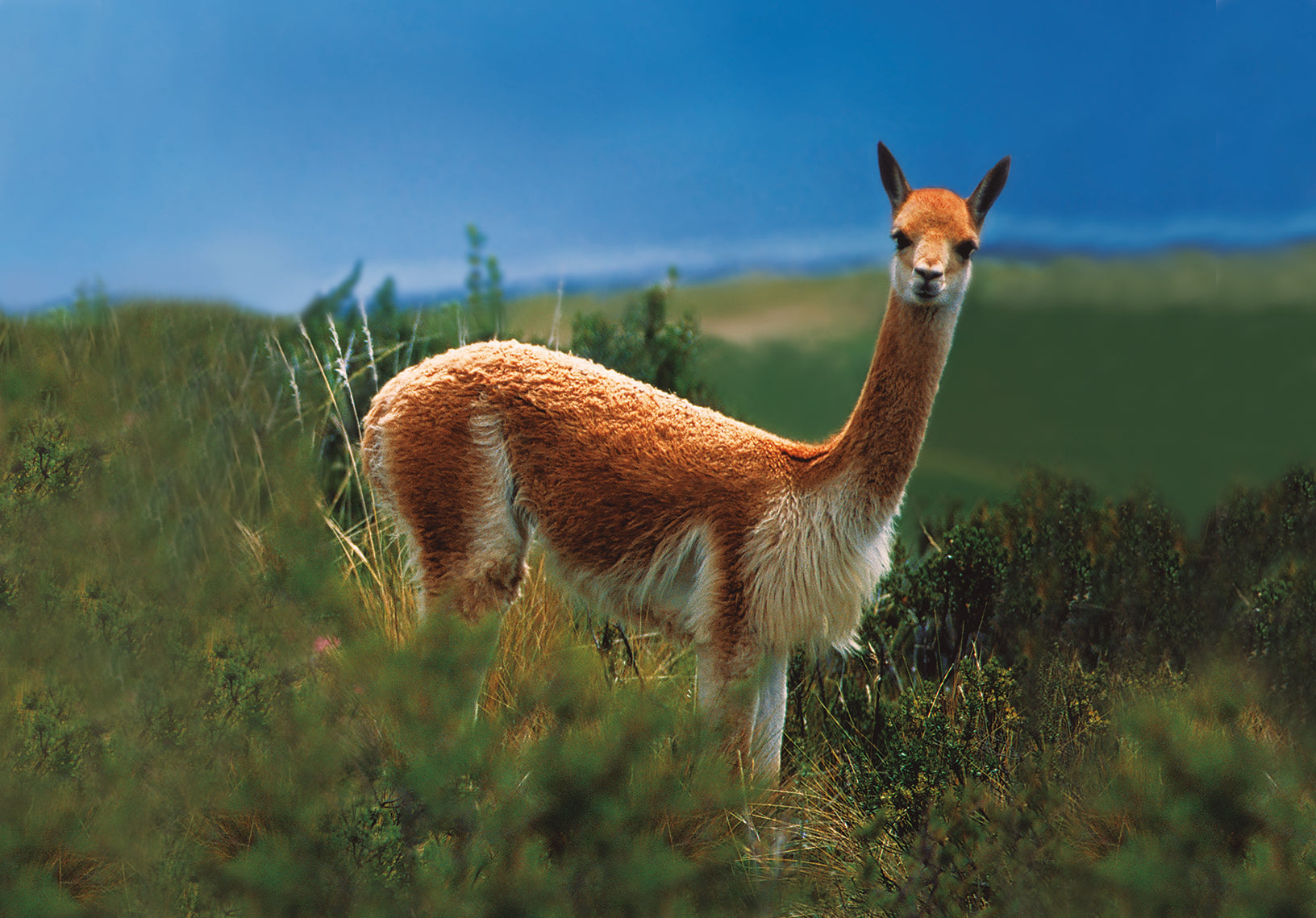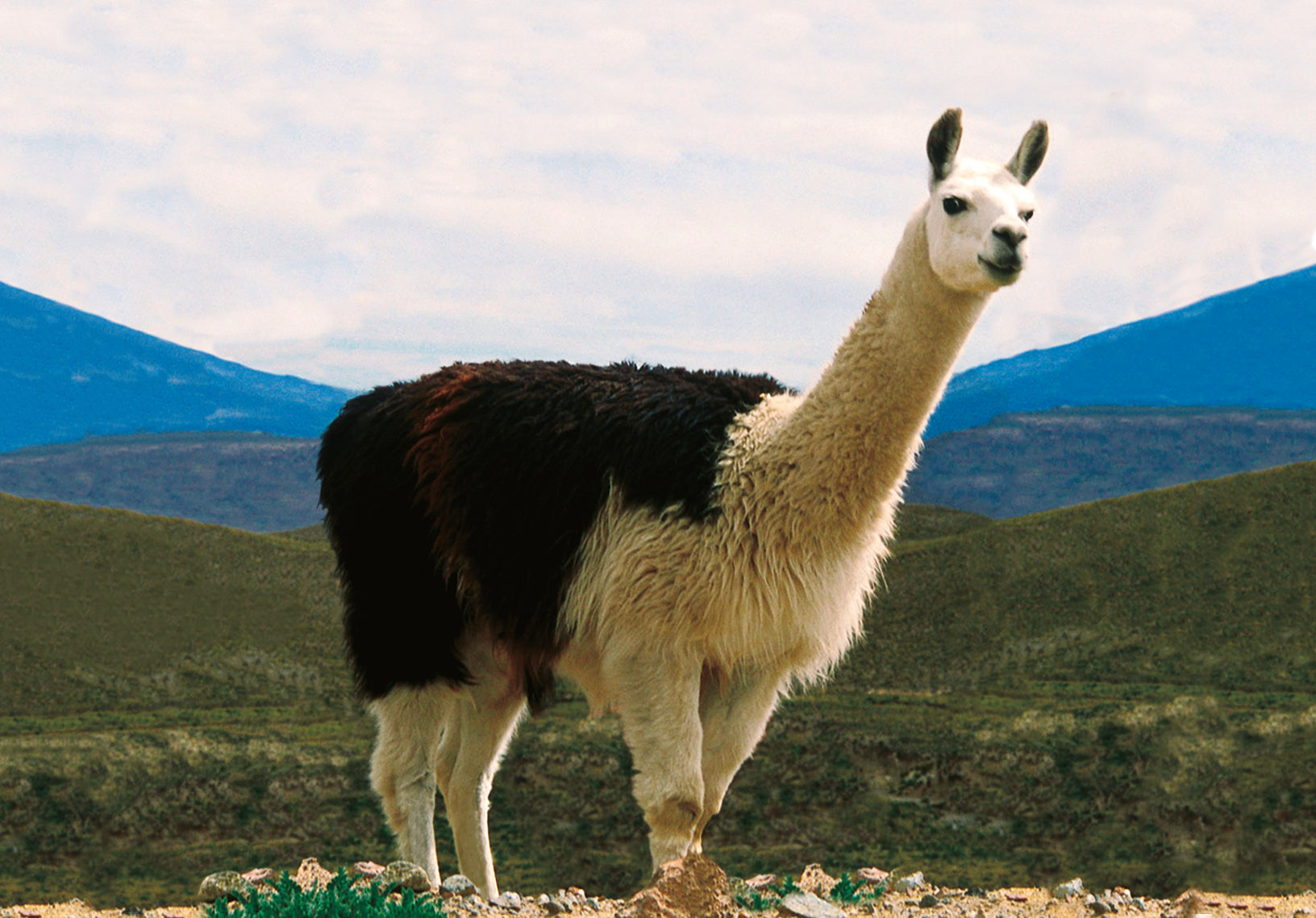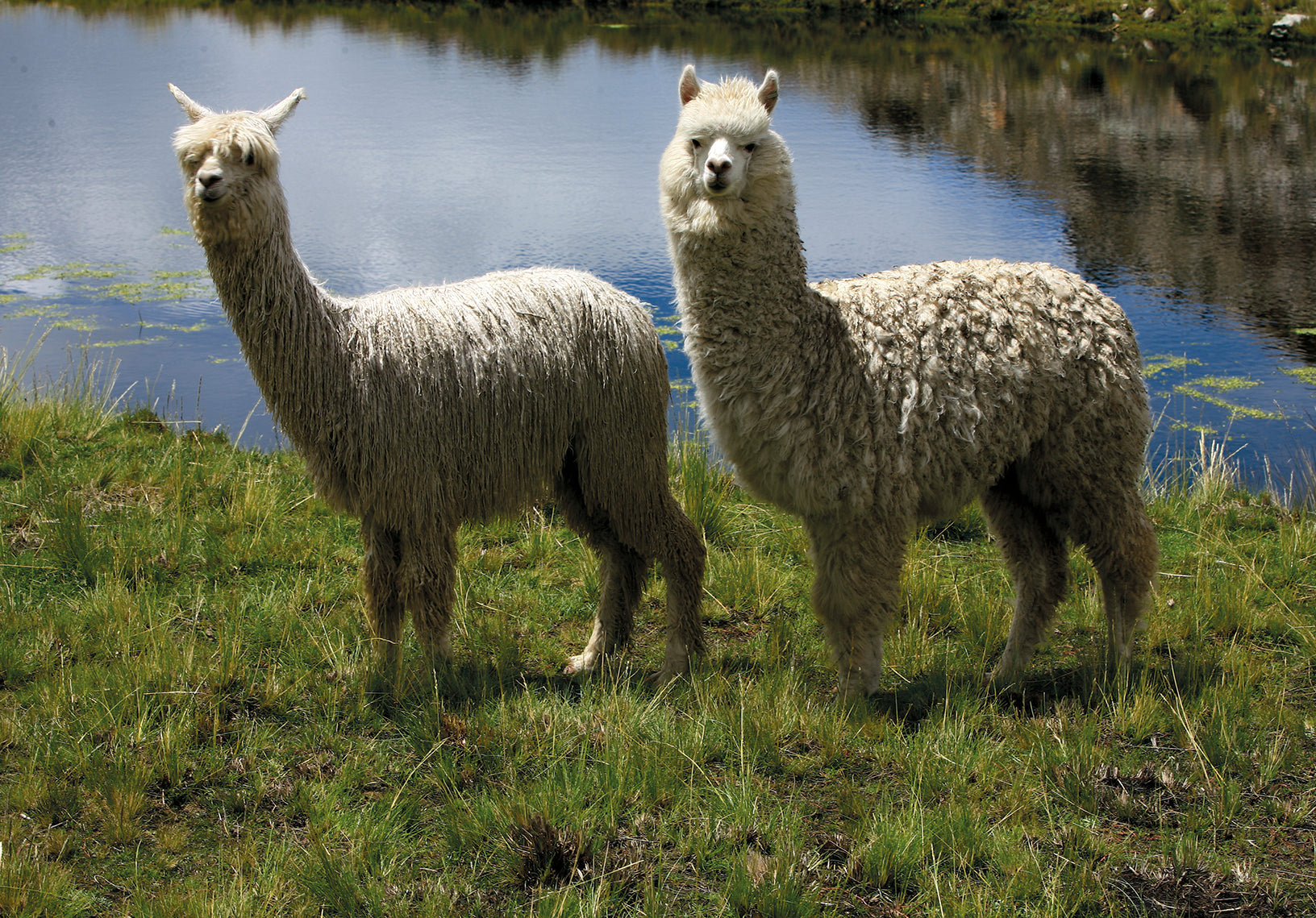The majestic Peruvian Andes are not only guardians to snowy peaks and deep valleys; they also shelter a living treasure: the South American camelids. Deeply rooted in the high Andean culture, these creatures are the lifeblood of communities that have learned to coexist with and care for Vicuñas, Guanacos, Alpacas, and Llamas. Beyond their economic significance, these animals symbolise the cultural and natural richness of these regions.

Alpaca
Native to South America, Alpacas stand out with their slender figure and graceful bearing. They are the most numerous species among the South American camelids. Upon maturity, they stand between 81 and 99 centimetres and weigh anywhere from 48 to 84 kilograms.
These regal creatures predominate in South American grasslands, with a population estimated between 3.5 and 4 million. Remarkably, 95% of them call the southern regions of Peru home. Adapted to life at altitudes ranging from 2,500 to 4,500 metres above sea level, Alpacas are accustomed to extreme temperature fluctuations from +30ºC to -20ºC within a single day. They graze on the natural grasses of the high moorlands, subsisting on a low-protein diet in their challenging habitat.
The Alpacas' fleece, sheared every 18 months typically from November to March, is their prized possession, yielding between 2 and 3 kilograms of fine fibre per animal. This fibre is cherished and crafted into garments like sweaters, ponchos, coats, and bedding, among others. The chromatic richness of the Alpaca's fleece is noteworthy, spanning 32 natural shades, from the purest white to the deepest black, through sophisticated greys and browns.
Within the Alpacas, we find two distinctive variants: the Huacaya and the Suri. They differ not just in appearance but also in the unique characteristics of their fibre.
Alpaca Huacaya
Distinguished by its aura of dignity and elegance, the Alpaca Huacaya emerges as the dominant variety among Alpacas. This species accounts for approximately 90% of the Alpaca population in Peru. Its fibre, known for its softness and volume, is highly prized for its broad palette of natural shades, offering unmatched chromatic richness. The Huacaya, with its harmonious texture, embodies the perfect blend of strength and refinement.
Scientific name: Vicugna Pacos
Population: 4.0 million
Habitat: Peru, Chile, and Bolivia.
Alpaca Suri
Although the Alpaca Suri may not be the most common variety, it shines with its unique and majestic beauty. Characterised by notably long and silky fibre that gleams with an unparalleled lustre. Its colour range, while less varied, still captivates with natural hues from pristine white through delicate beige to the gentlest browns. Its distinctive texture, with long wavy hair, gives the Suri a presence that's both unique and easily recognisable. Representing close to 10% of the Alpaca population in Peru, Suris contribute richness and diversity to the camelid realm.
Scientific name: Vicugna Pacos
Population: 400,000
Habitat: Peru, Chile, and Bolivia.

Vicuña
With its delicate and refined presence, the Vicuña stands out as the smallest South American camelid. Its slender frame reaches up to 90 cm in shoulder height and weighs around 50 kg. Despite nearing extinction in the 1960s, conservation efforts in Peru have ensured its survival. Bearing a splendid coat of long, soft, and shiny fur, Vicuñas annually provide a fleece weighing close to 250 grams, renowned for its exquisite fineness and regarded as one of the finest animal fibres in the world.
Scientific name: Vicugna Vicugna
Population: 150,000
Habitat: Peru, Chile, Bolivia, and Argentina.

Llama
Majestic in stature, the Llama stands as the largest and most robust South American camelid. Its history intertwines with ancient pre-Incan civilisations, being an essential element in their daily lives as a beast of burden. Today, it continues to play a pivotal role in numerous Andean ceremonies and religious rituals. Its physical features, such as its long legs and distinctive tilted ears, grant it an iconic appearance. While its fleece is naturally more coarse than that of the Alpaca, once processed, it offers a soft and pleasant texture. Two primary varieties of Llama are recognised: the "Qara", with scanty fur, and the "Chaku", with a woolly coat.
Scientific name: Lama Glama
Population: Llama Chaku - 1 million; Llama Qara - 1.5 million
Habitat: Bolivia, Peru, Chile, and Argentina.

Guanaco
The Guanaco, a close relative of the Vicuña, is a wild camelid species that forms small communities, usually under the oversight of a lone dominant male. Its resilient nature allows it to inhabit a range of landscapes, from coastal areas to the staggering heights of the Andes, exceeding 4,600 metres above sea level. This adaptability showcases its versatility as the most flexible among South American camelids. The superior quality of its fibre is not only tangible but also mirrors the innate dignity of this regal creature.
Scientific name: Lama Guanicoe
Population: 600,000
Habitat: Argentina, Chile, Peru, and Bolivia.









